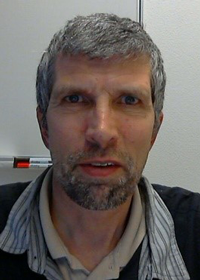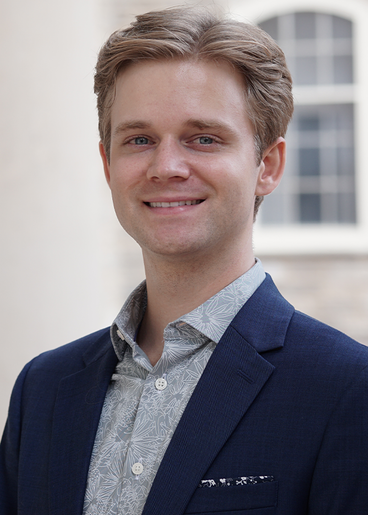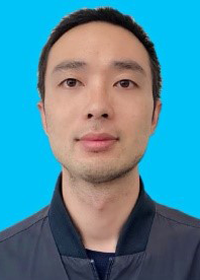Session Moderator: Lars Oddsson, University of Minnesota
Presentations in this session were chosen from the peer-reviewed contributed papers. The papers will be published in the 2023 Proceedings of the Design of Medical Devices Conference in the ASME Digital Collection.
Presentations are added as they are confirmed.
Design of an Articulating Non-Invasive Joint Distractor for Metacarpophalangeal Joint of the Thumb
Pardis Farjam (Video)
University of Twente
Edsko Hekman (Q&A)
University of Twente
Abstract: There is no specific distraction device available for the metacarpophalangeal joint (MCPJ) of the thumb. Joint distraction is required to facilitate the implantation of MCPJ spacers. In addition, expanding the joint space is essential for MCPJ arthroscopy. In this work, we report the design process of an articulating non-invasive joint distractor for the MCPJ of the thumb and demonstrate the functionality of a functional prototype during a cadaveric experiment.
Co-Authors: Pardis Farjam, Timo Roubos, Edsko E.G. Hekman, Gijsbertus J Verkerke and Jeroen Rouwkema

Bio: Pardis Farjam (1992) is currently working as a Ph.D. student in the Department of Biomechanical Engineering under the supervision of Prof. Bart Verkerke, co-supervised by Jeroen Rouwkema and Edsko Hekman. Her research focuses on the development of a fixation system and required surgical devices for a novel minimally invasive joint implant. Pardis received her BS. Degree in Mechanical Engineering from Shiraz University. She joined Shiraz University (2014-2015) as a junior researcher. She mainly worked on computational biofluid mechanics, simulation, and tracking of aerosols in the respiratory system. In 2018, she obtained her Master’s degree in Biomedical Engineering from The Polytechnic University of Milan with specifications in Biomaterials and Biomechanics. During her Master's thesis, she worked on performing a novel multistep surface coating on Magnesium alloy which can be utilized as biocompatible biodegradable implants in different sectors such as cardiovascular stents and orthopedic implants. During her internship at the University of Melbourne (2018), she mainly focused on melt electrospinning of natural polymer blends as the main constituent of cartilage extracellular matrix. She exploited the capacity of collagen and elastin to construct 3D-printed scaffolds.

Bio: Edsko Hekman received his BA in Science and Engineering from Calvin College (Michigan, USA) in 1918 and his MA in Mechanical Engineering from Delft University in 1986. After 6 years of developing equipment for medical research at the Radboud University he joined the research and teaching staff of the University of Twente. Main interests are development of prosthetic, orthotic and robotic devices for restoration of gait and mobility, and in general devices in the technical biomedical field. He is member of ISB and IEEE.
A Compliant Fracture Fixation Plate for Controlled Axial Motion in Long Bone Healing

Connor Huxman
The Pennsylvania State University
Abstract: In this work, we introduce a novel compliant fracture fix- ation plate capable of delivering controlled axial micromotion to a diaphyseal fracture. When an appropriate amount of in- terfragmentary strain is achieved, this micromotion is known to facilitate secondary healing by callus formation. The proposed single-piece designs leverage mechanical compliance to achieve motion, eliminating friction, wear, and detailed assembly inher- ent to other multi-component concepts. 3-dimensional simula- tions are carried out under offset axial loading. Initial finite ele- ment analysis results suggest that flexure-based compliant plates can achieve increased magnitude and symmetry of axial inter- fragmentary strain, even when constructed of stainless steel, a surgeon-preferred material that traditionally may be too stiff to promote callus formation.
Bio: Connor has been designing orthopaedic devices in industry and academia for the last four years. This has included working as an R&D engineer at a start-up on the design and regulatory approval of spinal fusion implants, as well as academic research on the design of new devices for fracture fixation. He received his B.Sc. in Biomedical Engineering in 2020 from the University of Waterloo (Ontario, Canada), his M.S. in Engineering Design in 2022 from Penn State University, and is currently working towards his PhD in Mechanical Engineering at Penn State. Connor is passionate about the intersection of orthopaedic implant design, regulatory strategy, and surgeon adoption. He is currently developing a new technology for delivering controlled motion to long bone fractures with the goal of facilitating faster and stronger bone healing.
Co-Authors: Connor Huxman, Gregory Lewis, Gary Updegrove, April Armstrong and Jared Butler
The Pennsylvania State University
Robotic Orthosis based on Bend Sensors for Occupational Musculoskeletal Disorder Prevention

Jinsai Cheng
Kent State University
Abstract: Work-related musculoskeletal disorders are generated, preceded, or aggravated by repeated or continuous use of certain parts of the body. Orthoses have been developed to help people prevent or treat these kinds of disorders. In this paper, we developed a novel flexible orthosis based on bend sensors to count the times of the repetitive movements and remind the worker to take adequate rest after a period of repetitive movements, thus, to reduce the possibility of developing musculoskeletal disorders. A novel movement detection method is developed to count the times of the repeating movement based on the trends/slopes of the rotation angles. Experiments have been conducted to evaluate the accuracy of the novel movement detection method. The results demonstrate that the movement detection method can accurately count the times of the wrist movement with varying rotation angles and speed and issue reminders for rest.
Bio: Jinsai Cheng received the B.S. and M.S. degrees from Jiangnan University, Wuxi, Jiangsu province, China, in 2012 and 2015, respectively. He is currently working toward the Ph. D degree in mechatronics at Kent State University, Kent, OH. From 2015 to 2017, he worked as a Software Engineer at Chuangkeyuan Laser Equipment Co.Ltd, Wuxi, Jiangsu province, China. In 2018, he joined the Gaomingkeyuan Co.Ltd, Wuxi, Jiangsu province, China, as a Software Engineer. His research interests include robotic walker and wire-driven robots.
Co-Authors: Jinsai Cheng, Wenbing Zhao and Tao Shen
Creating a Fracture Reduction and Wire Navigation Simulator for Orthopaedic Skills Training and Assessment
Marcus Tatum
University of Iowa
Abstract: We describe a novel surgical simulator designed to train and assess orthopaedic resident’s surgical skill on the tasks of fracture reduction and surgical wire navigation. We use a unique approach of combining accurate surgical models created using patient CT data along with a 3D tracking system that allows for realistic, real-time imaging along with automated performance tracking and benchmarking. Additionally, we have devised a method for tracking the surgical wire associated with the procedure to allow for a complete simulation of reducing and pinning a pediatric elbow fracture.
Authors: Marcus Tatum, Steven Long, Don Anderson and Geb Thomas
Bench Testing of a Tunable Ankle-Foot Orthosis with Adjustable Stiffness and Neutral Angle
Tianshu Jiang
University of Minnesota
Abstract: Ankle-foot orthoses (AFO) are commonly prescribed for children with cerebral palsy as a gait assistance device with their functionality depending on the AFO stiffness and neutral angle. Our group is developing a computer-controlled AFO emulator that can adjust stiffness and neutral angle on the fly for use during an AFO prescription process. This study describes bench test results from an early version of the prototype device.
Bio: Tianshu Jiang received her B.S. and M.S. in Biomedical Engineering from the University of Minnesota, Twin Cities. She is currently a M.S. student in the University of Minnesota Robotics program and conducting research in the Human/Machine Design Lab directed by William Durfee.
Co-Authors: Tianshu Jiang and William Durfee